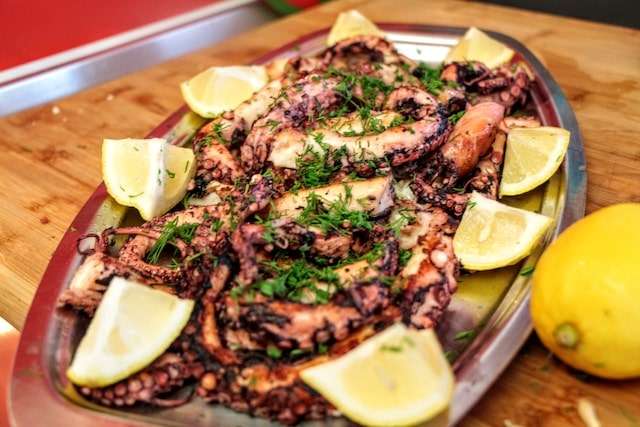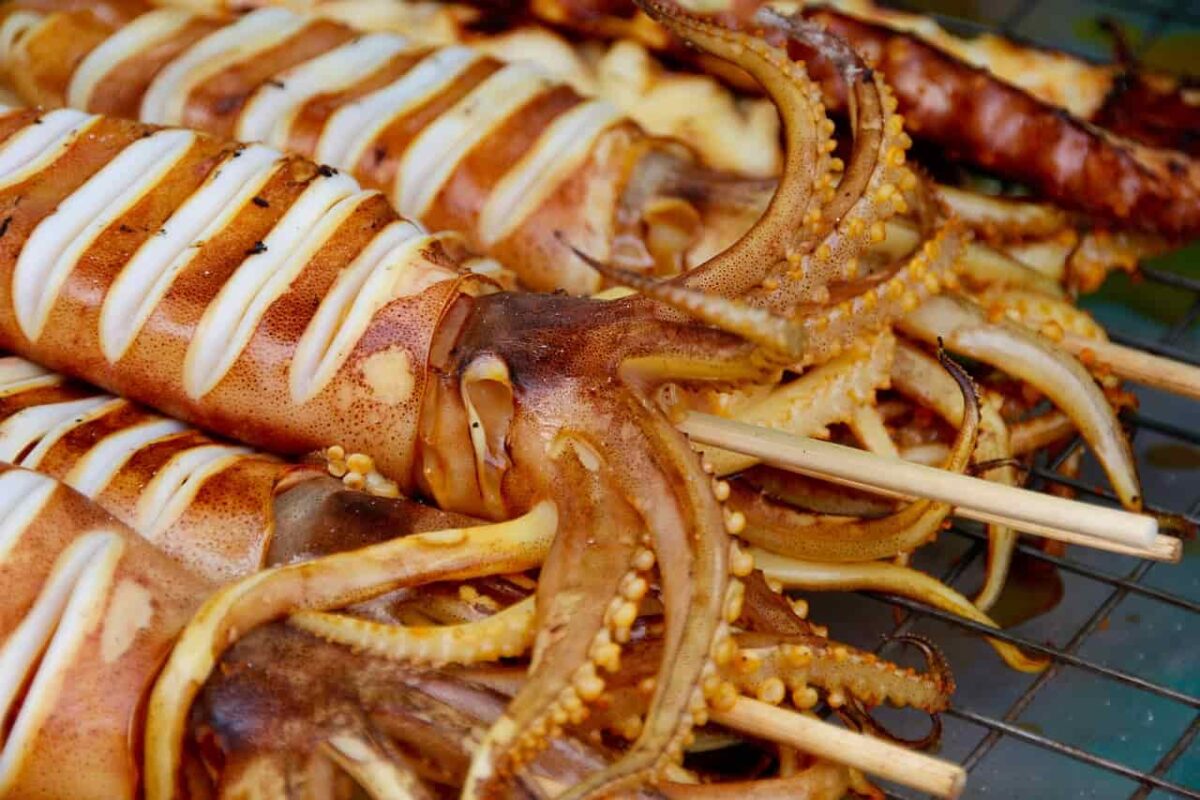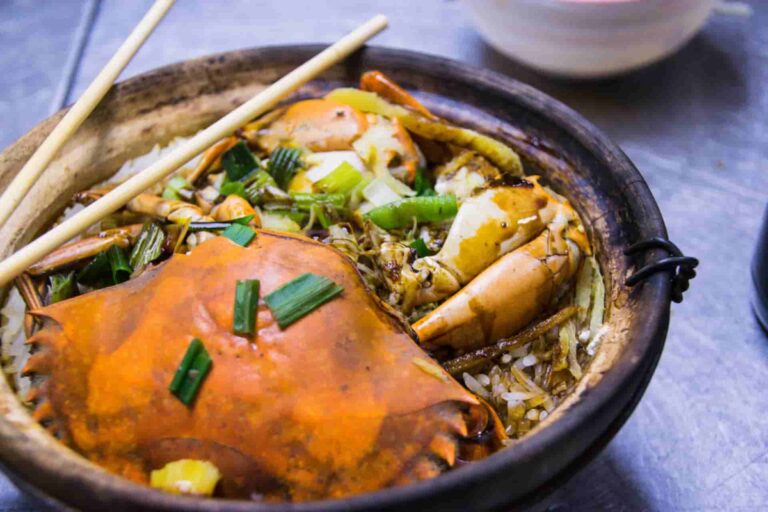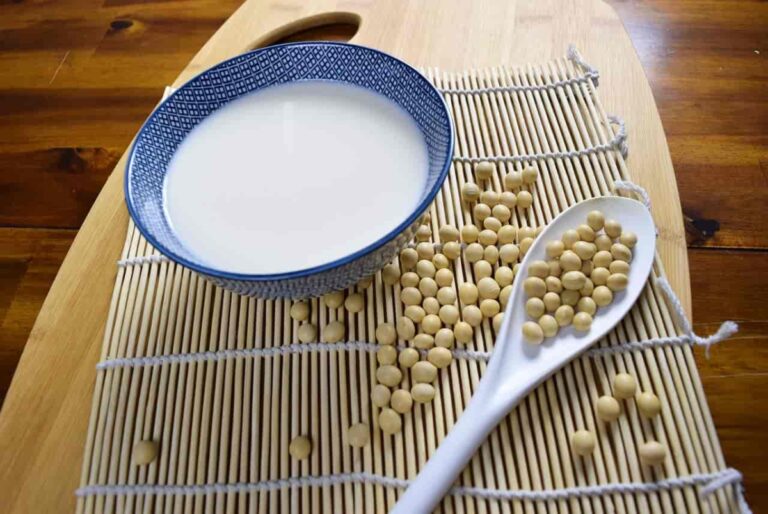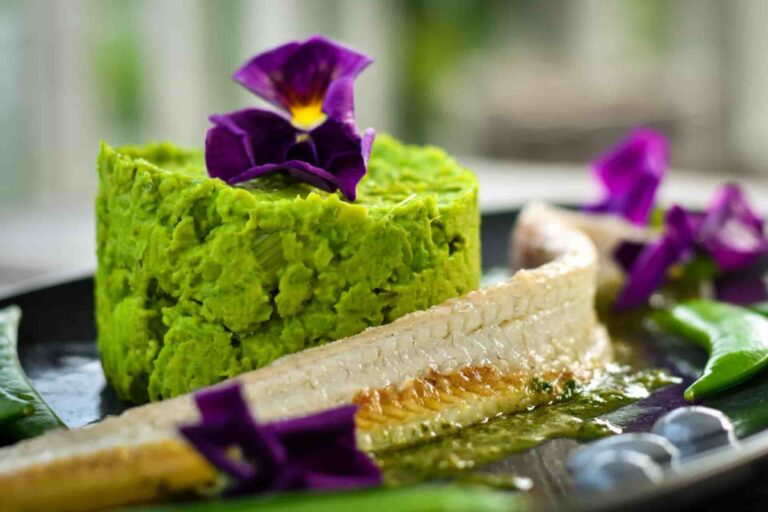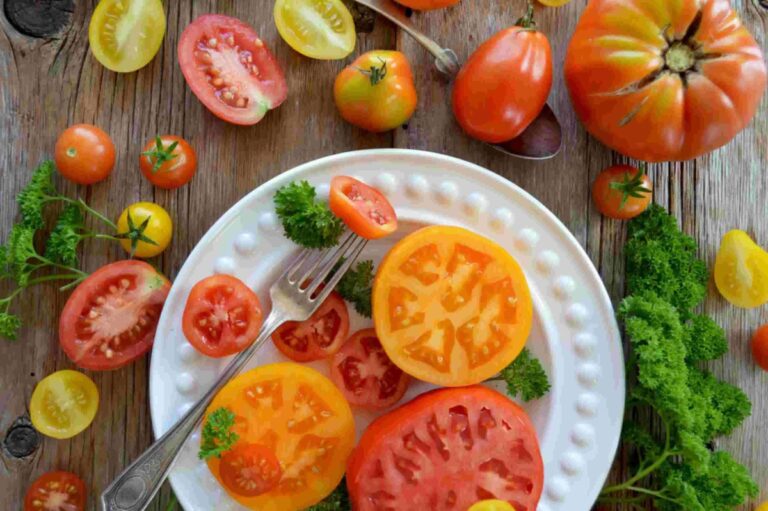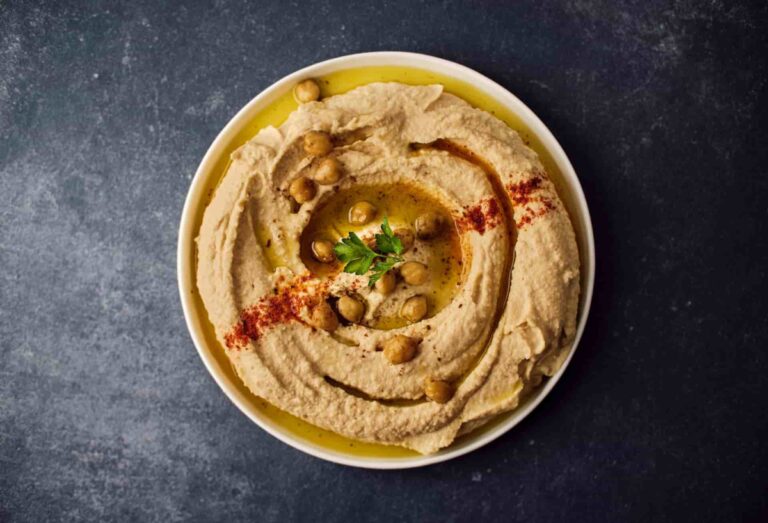37 free squid kitchen insights and benefits
Did you know that squid is frequently used in dishes that are traditionally prepared in the Mediterranean region?
- Perhaps the most well-known meal in the Mediterranean that includes squid is batter-coated squid, typically deep-fried for no more than 2 minutes to avoid harsh, chewy flesh. It’s also common to offer it without seasoning, with salt and lemon on the side. Puntillitas, a meal from Spain made with tiny squid and batter, is another example of a food from the Mediterranean. Calamares en su tinta, or squid cooked in its own ink, is another popular dish in Spain. Paella and risotto aren’t the only examples of meals in the Spanish and Italian cuisines that incorporate squid. Stewed squid with vegetables like squash and tomatoes is a staple in the cuisines of Greece, Turkey, and even Croatia, which is nearby.
- Squid is a common component in a wide variety of foods that are prepared in China, including noodle dishes, rice dishes, and stir-fry dishes. Squid is used in practically every kind of seafood meal that is served in Japan. Squid is also prepared separately in a number of dishes, including sashimi and other preparations. Both Chinese and Japanese cuisines contain grilled squid, and dry shredded squid is a favorite snack in both China and Japan.
- In Korean cuisine, squid may be prepared in a variety of ways, including frying it with batter or mincing it and cooking it as part of a pancake. In addition, squid may be found as a component in a variety of fiery soups. When drinking alcohol, Koreans will often eat dried squid combined with peanuts for a snack. In addition, squid prepared either by boiling or steaming is considered a delicacy in traditional Korean cuisine.
- East European countries each have their unique method for cooking squid. After first chopping the squid into long, thin strips, they then boiled it for a short period of time and served it as a salad with onion rings and mayonnaise as a topping. One other preparation for squid includes first filling the squid with rice and veggies, then roasting the stuffed squid.
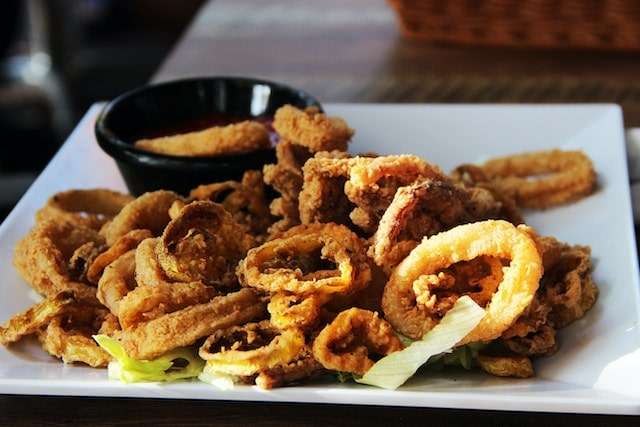
Squid nutrition values and health benefits
- There are a number of positive health effects associated with squid. It is a kind of food that may be regarded as an excellent source of the nutrient iron. Iron has qualities that are beneficial to the operation of the brain. In addition, squid is a source of vitamin B12, which is essential to the proper development and operation of the brain as well as the maintenance of the nervous system’s health. Patients suffering from Alzheimer’s disease, memory loss, and low attention levels might also benefit to some degree from this treatment.
- Squid contains fatty acids, which are another kind of nutrition. Omega-3 fatty acids are well-known for the many advantages they provide to one’s health. They alleviate depression and anxiety, enhance eye health, and reduce the chance of developing heart disease, which are all ways in which they contribute to an individual’s overall improvement in health. In addition to this, omega-3 fatty acids are well-known for their ability to promote the health of a baby’s brain throughout pregnancy as well as the brain health of a child during the early stages of that child’s life.
- Calamari in its natural state has both monounsaturated and polyunsaturated fats, which are considered to be the healthiest kinds of fat. Fatty acids derived from them have the potential to enhance one’s overall cholesterol profile by lowering levels of “bad” cholesterol while simultaneously raising levels of “good” cholesterol. In addition to that, these fatty acids have the potential to boost general wellness.
- When calamari is deep-fried in oil and then seasoned with salt, the quantity of sodium in the food considerably rises, which may lead to excessive cholesterol levels. In turn, having excessive cholesterol levels may lead to a variety of ailments, including heart disease and high blood pressure.
- It is possible to classify squid as a shellfish as well. Therefore, those who are allergic to shellfish should steer clear of consuming squid. If you experience an allergic response after eating squid, it is possible that it will have a negative impact on your health. In the event that you unintentionally consume squid and afterwards develop symptoms of this allergy, you need to see a doctor as soon as possible to receive treatment for it.
- Squid, much like salmon and tuna, is another source of mercury. Consuming squid may put you at risk for mercury poisoning; the levels of mercury aren’t as high as they are in some types of tuna, but they’re still high enough to put you at risk. This condition may manifest itself if you eat an excessive quantity of this fish or consume it in huge quantities.
- Poisoning from mercury may pose a significant health risk. Even though squid only has trace amounts of mercury, it is nevertheless best to consume it in moderation because of the risk of mercury poisoning.
- Selenium and vitamin E are both found in quite high concentrations in squid. Selenium, which is only found in trace amounts in the human body, collaborates with vitamin E to support healthy body development and fertility. Selenium is present in the human body. It is thought that its action as an anti-oxidant contributes to the battle against cancer and that it may assist in suppressing the formation of tumors.
- People who want to increase their protein consumption but don’t want to do so at the expense of their calorie targets would greatly benefit from eating squid. According to the nutritionist, there are only 75–85 calories in a dish of squid that weighs 100 grams. However, admirers of batter-fried calamari rings should not be deceived; the calorific value may increase if the item is deep-fried.
100g of Squid has 175 calories (732 kJ), 18 g of protein, 7 g of fat, and 8 g of carbs, including 0g of fiber.
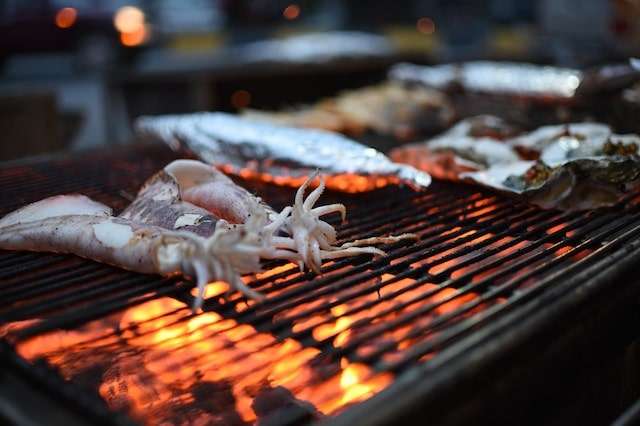
How to store squid and how to buy them
- If you are not located at or in close proximity to a seaport where squid is collected, you may have a tough time locating fresh squid that has not been frozen before. A market like entire Foods, a fish market, or a specialist food store is where you have the best chance of finding entire thawed squid that was previously frozen.
- When you buy squid in its complete form, you may clean it and extract the ink to use in other culinary endeavors on your own. If you purchase cleaned squid, it will already have the skin, ink, entrails, cuttlebone, and beak removed from it.
- If you want your dish to be ready in a shorter amount of time, choose smaller squid that have clear eyes and juicy meat. When it comes to tenderness, smaller squid are preferable than bigger ones. The fragrance of the seafood shouldn’t be overpoweringly fishy and should instead smell fresh and salty like the ocean. If the previously frozen squid has an excessive amount of ice crystals or other indicators of freezer burn, you should steer clear of it. If the squid wasn’t frozen correctly, it may have a pinkish or reddish hue.
- You can get frozen squid in the majority of grocery stores as well as specialty food stores. You have the option of selecting cut rings, tentacles, and squid tubes, which represent the bodies. The ordinary user just needs to wipe them down before using them. It is quite likely that you will be required to purchase two to three pounds at a time.
- Allow the squid to defrost in the refrigerator a few hours or even a day before you want to use it. Do not let it thaw naturally at room temperature by leaving it out. You may also defrost it in cold running water or in cold water in a dish; in either case, you should be sure to change the water every half an hour. It is possible to defrost anything in the microwave if you want to utilize it in a short amount of time.
- After purchasing squid that is either fresh or thawed, ensure that it is well-protected by placing it in the section of your refrigerator that is the coolest or on a bed of ice. Within two days after purchase, fresh squid or squid that has been frozen and then thawed should be utilized. Cooking seafood is necessary to ensure that it is safe to eat since it should never be refrozen after having been previously frozen. You are then able to, if required, freeze the cooked squid.
- If you purchased fresh squid, you may immediately clean it and save it in the freezer for use at a later time. To freeze uncooked squid, put the cleaned squid in plastic freezer bags, be careful to press out all of the air, and close the bags firmly. Make use of it within the next two months.
- Squid that has been cooked may be stored in the refrigerator for up to three days in an airtight container, or it can be frozen for up to two months.
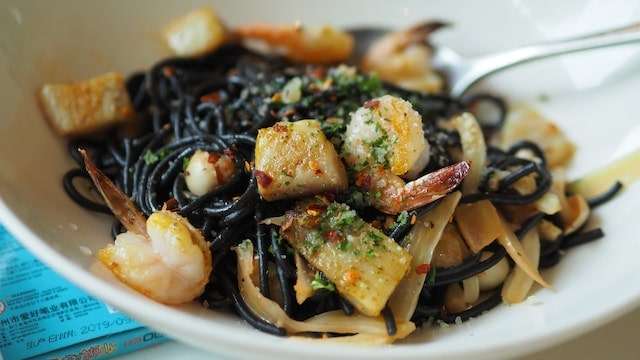
Cooking techniques, secrets, and tips from the kitchen
- Even though it might be a little bit of a mess, cleaning an entire squid is really very simple. Work while standing in front of the sink, and don some gloves if you like to avoid getting your hands dirty.
- To begin, separate the tentacles from the tube that has fins by tugging it away from them; it should come off easily.
- Put your fingers into the tube, and using them, take out the translucent quill of cartilage that has a plastic-like appearance within. At this point, you may use your fingernail to scrape the black skin off of the tube if you’re feeling picky, but it’s perfectly edible if left on.
- Place the remaining portion of the squid carefully on a cutting board (be careful not to squeeze any of the tissue that is located above the eyes and tentacles, since this is where the ink bag is located) and, with a sharp knife, cut between the eyes and the tentacles.
- Discard everything other than the tentacles and save just the tentacles. You need to feel around in the middle of the tentacles until you find something hard and beak-like, then you need to rip it out and throw it away.
- You will need to repeat this process with the remainder of the squid, and then you can prepare it for cooking by rinsing the tubes and tentacles under cold running water.
- It is possible to prepare squid in a wide variety of ways, making it one of the most adaptable ingredients in the kitchen. The most essential point to keep in mind while preparing squid for cooking is that it must be prepared in one of two ways: either by cooking it quickly and at a high temperature, or by cooking it at a low temperature for a long time. The ideal texture for squid is springy but not chewy, and anything in between will result in unpleasantly tough flesh. The following are some of our personal favorites:
- Squid is fantastic when grilled. It is ideal to keep your tubes whole if at all possible to avoid them from dropping between the grates; however, if your tubes were pre-sliced, you may use a grill pan instead. Put the squid on the grill, season it with salt and pepper, and then turn up the heat as high as you can. After two or three minutes, the squid should be well charred and done to perfection. You may eat it by itself, stuff it inside a tortilla, and wrap it in lettuce and kimchi, as they do in Korea.
- The fastest technique to prepare squid ready for consumption is, by far, to use a pan that is screaming hot. After seasoning with salt and pepper, slicing the tubes or leaving them whole, and searing the squid over the highest possible heat for two or three minutes, you will have the ideal protein option for a midweek meal that does not need any more preparation. You may toss it with spaghetti, add it to the top of a rice bowl along with some easily prepared veggies, or use it as a topping for a simple green salad.
- There are several methods of preparation other than the dry cooking method for squid. For a light seafood salad that is perfect for a picnic, blanch cut tubes and tentacles in boiling water for one minute, then shock them in an ice bath. Finally, combine the chilled squid with thinly sliced vegetables (think fennel, celery, and onion) and a vinaigrette that features lemon. Squid is also delicious in soups; just add the sliced tubes and tentacles during the last few minutes of cooking and then serve the soup shortly thereafter.
- A straightforward braise is an excellent method for preparing squid, particularly if you have even a little bit of extra time on your hands. Allow the squid to simmer for at least thirty minutes and up to an hour, or until it is extremely soft, regardless of whether you are braising it in garlic, herbs, and white wine; using a straightforward marinara sauce; or preparing it with your preferred curry.

History of squid from the beginning until today
- Among the ancestors of today’s squids are the ammonites that ruled the waters between 400 and 65 million years ago.
- Both Aristotle (fourth century BC) and Pliny the Elder (first century AD) mentioned giant squid in their respective works.
- Greek mythology’s Gorgon may have been based on an octopus or squid, with the former portraying Medusa’s severed head, the latter’s beak standing in for the Gorgon’s jutting tongue and teeth, and the latter’s tentacles doing duty as the monster’s serpentine appendages.
- Scylla, the six-headed sea monster from Homer’s Odyssey, may have originated in a similar way. Large cephalopods were probably also a source of inspiration for the Nordic mythology of the kraken.
- In his book Twenty Thousand Leagues, published in 1870, science fiction author Jules Verne described a story about a creature similar to the kraken.
- Sushi, sashimi, and tempura are just a few of the many Japanese dishes that use squid. In addition, you may use soy sauce in any of these cooking methods: braising, grilling, and stewing.
- In certain cases, Koreans may instantly kill a squid and prepare it for food. Squid tentacles, unlike octopus tentacles, often come to a complete halt when they reach the surface of a table. Chilli sauce, soy sauce, sesame sauce, and Korean mustard are all good options for dipping the squid in. The last step before serving is wrapping the meat in lettuce or perilla leaves and seasoning it. Also, the squid is seasoned with a hot pepper sauce before being cooked.
- Adobong pusit, or “squid in adobo sauce,” is a traditional Filipino dish that involves cooking the squid in its ink to bring forth its sour flavor. Battered squid rings, also known as calamares in the Philippines, are a popular kind of deep-fried street snack served with a variety of dipping sauces.
- Egypt, Cyprus, and Turkey are all known for their deep-fried squid rings and limbs. Some of the other regional cuisines of these places pair the squid with vegetables during preparation. It is common practice to stuff squid, too.
